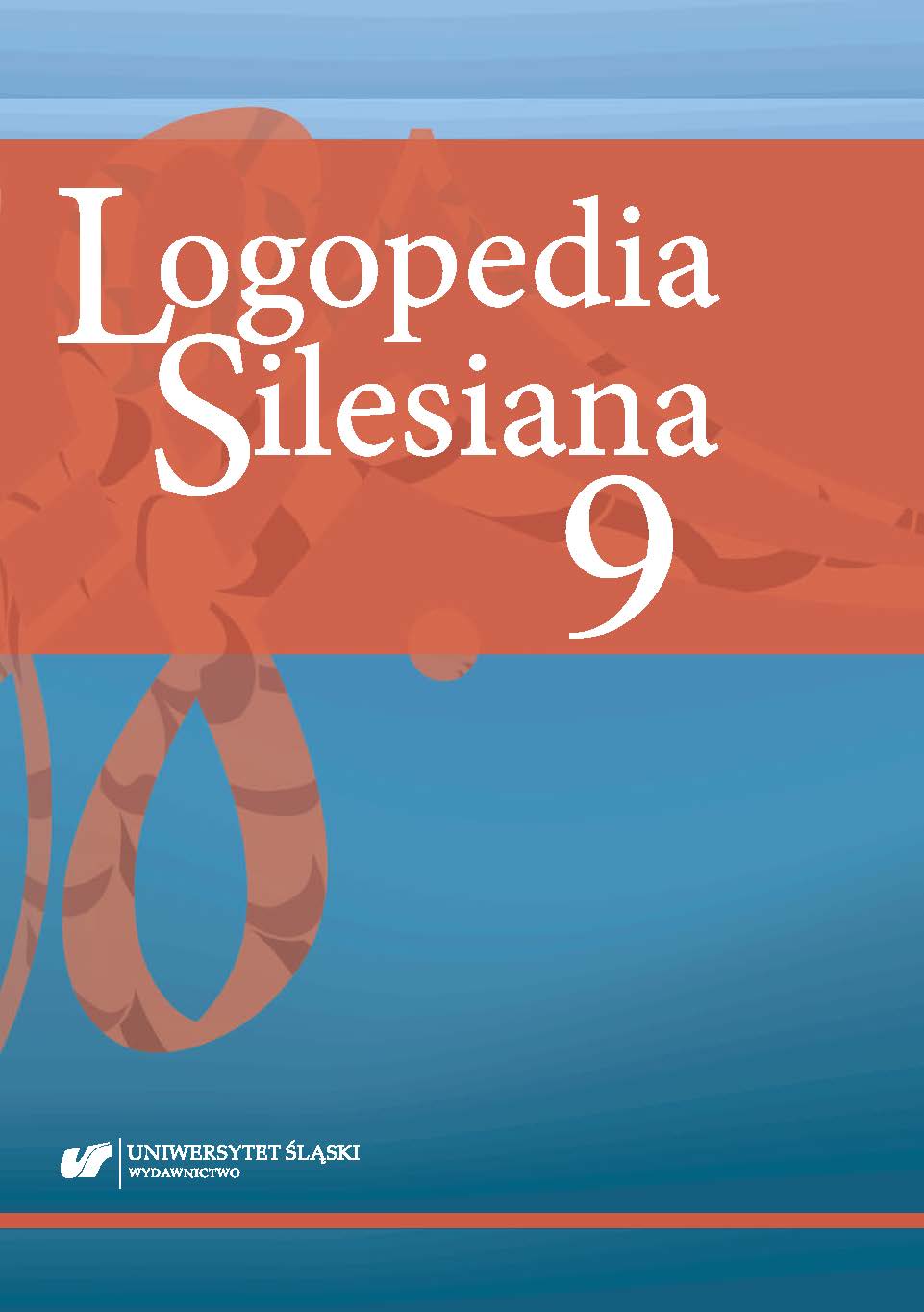Búa, B.A., Pendletonc, H., Westinb, U., Rydellc, R. (2018). Voice and swallowing after total laryngectomy. Acta Oto-Laryngologica, 138(2), e170–e174.
Google Scholar
Chen, A., Frankowski, R., Bishop-Leone, J. (2001). The development and validation of a dysphagia-specific quality of life questionnaire for patients with head and neck cancer. Archives of Otolaryngology–Head & Neck Surgery, 127, e870–e876.
Google Scholar
Chmielewska, J., Jamróz, B., Gibiński, K., Sielska-Badurek, E., Milewska, M., Niemczyk, K. (2017). Badanie wideofluoroskopowe – procedura badania z oceną kwestionariuszową. Polski Przegląd Otorynolaryngologiczny, 6(1), 2–20.
Google Scholar
Czerżyńska, M., Orłow, P., Choromańska, M. (2017). Skutki uboczne radioterapii nowotworów głowy i szyi. Metody leczenia odczynów popromiennych w jamie ustnej. Pediatria i Medycyna Rodzinna, 13(1), 53–62.
Google Scholar
Hamerlińska, A., Lemańczyk, M. (2018). Dysfagia nowotworowa w trakcie radioterapii na przykładzie osób po usunięciu krtani – wyniki badań własnych. Neurolingwistyka Praktyczna, 4, 86–103.
Google Scholar
Hutcheson, K., i in. (2012). Late dysphagia after radiotherapy-based treatment of head and neck cancer. Cancer, 118(23), e5793-e5799.
Google Scholar
Jamróz, B., Chmielewska-Walczak, J., Milewska, M. (2019). Instrumentalne metody badania zaburzeń połykania. Atlas z materiałem wideo. Warszawa: Medyk.
Google Scholar
Landera, M.A., Lundy, D., Sullivan, P.A. (2010). Dysphagia after total laryngectomy. American Speech-Language-Hearning Association, 19(2), 39–44.
Google Scholar
Lippert, D., i in. (2016). Preliminary evaluation of functional swallow after total laryngectomy using high-resolution manometry. Annals of Otology, Rhinology & Laryngology, 125(7), e541–e549.
Google Scholar
Manikantan, K., i in. (2009). Dysphagia in head and neck cancer. Cancer Treatment Reviews, 35, e724–e732.
Google Scholar
Stoner, P.L., Fullerton, A.L., Freeman, A.M., Chheda, N.N., Estores, D.S. (2019). Endoscopic dilation of refractory postlaryngectomy strictures: A case series and literature review. Gastroenterology Research and Practice, e1–e9, https://doi.org/10.1155/2019/8905615.
Google Scholar
Stręk, P., i in. (2003). Ankietowa samoocena zaburzeń połykania i jakość życia u chorych leczonych z powodu nowotworów głowy i szyi. Otorynolaryngologia, 2(3), 120–125.
Google Scholar
Stręk, P., i in. (2005). Jakość życia a dysfagia u chorych po operacji raka krtani. Otorynolaryngologia, 4(3), 142–146.
Google Scholar
Stręk, P., i in. (2006). Wpływ podeszłego wieku na subiektywne oceniane zaburzenia połykania u chorych leczonych z powodu nowotworów głowy i szyi. Gerontologia Polska, 14(1), s. 98–105.
Google Scholar
Studzińska, K., Obrębowski, A., Wiskirska-Woźnica, B., Obrębowska, Z. (2012). Problemy psychologiczne w rehabilitacji chorych po operacjach całkowitego usunięcia krtani. Polski Przegląd Otorynolaryngologiczny, 2(1), 124–128.
Google Scholar
Sweeny, L., Golden, J.B., White, H.N., Magnuson, J.C., Carroll, W.R., Rosenthal, E.L. (2012). Incidence and outcomes of stricture formation postlaryngectomy. Otolaryngology – Head and Neck Surgery, 146(3), e395–e402.
Google Scholar
Terlingen, L.T., Pilz, W., Kuijer, M., Kremer, B., Baijens, L.W. (2018). Diagnosis and treatment of oropharyngeal dysphagia after total laryngectomy with or without pharyngoesophageal reconstruction: Systematic review. Head & Neck, 40, e2733–e2748.
Google Scholar
Zhang, T., i in. (2016). Biomechanics of pharyngeal deglutitive function following total laryngectomy. Otolaryngology – Head and Neck Surgery, 155(2), e295–e302.
Google Scholar


 https://doi.org/10.31261/LOGOPEDIASILESIANA.2020.09.06
https://doi.org/10.31261/LOGOPEDIASILESIANA.2020.09.06

 10.31261/LOGOPEDIASILESIANA
10.31261/LOGOPEDIASILESIANA